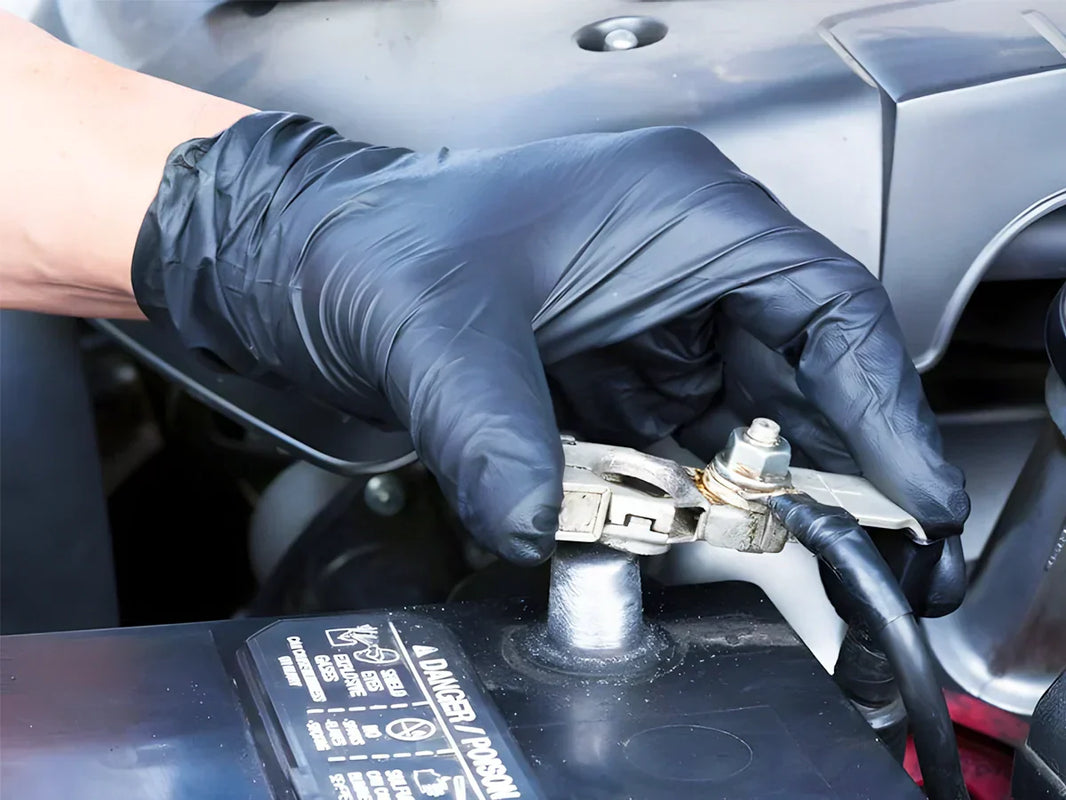Your doorbell’s performance and home security rely heavily on stable power. When the battery weakens, you may notice flickering lights, false alarms, or frequent reboots. This passage explains how to replace ring doorbell battery, identify when it needs changing, choose the right battery type, and troubleshoot issues after replacement. It also offers maintenance tips to extend battery life and ensure your doorbell runs smoothly. By understanding these steps, you’ll save repair costs, prevent sudden shutdowns, and keep your home’s monitoring system working reliably all year round.

Main content:
- Why You Should Pay Attention to Doorbell Battery Replacement
- Types of Doorbell Batteries
- Doorbell Power Supply Methods
- How to Tell When the Doorbell Battery Needs Replacement
- How to Replace Ring Doorbell Battery
- Battery Replacement and Charging Tips
- Common Problems and Troubleshooting After Battery Replacement
- Conclusion
- FAQs
Why You Should Pay Attention to Doorbell Battery Replacement

The doorbell battery is more than just a power source; it's crucial for the proper functioning of your entire home security system. When you notice your doorbell flickering, vibrating, or frequently losing power, these are often signs of an aging or damaged battery. Understanding and mastering battery replacement and maintenance methods can not only save on repair costs but also prevent doorbell malfunctions in critical moments, ensuring home safety and convenience.
Types of Doorbell Batteries

Dry Cell Batteries
Common types: AA and AAA alkaline batteries or NiMH rechargeable batteries.
Features: Convenient to use, ready to use immediately, no charging required. However, regular replacement is necessary, resulting in higher costs, and frequent replacements may affect the user experience.
Lithium Batteries
Common types: Lithium-ion batteries (such as 18650, 21700, etc.) or polymer lithium batteries(lithium polymer battery vs lithium ion).
Features: High energy density, long battery life. Some smart doorbells have built-in large-capacity lithium batteries (such as 5000mAh-9000mAh), which can last for months or even a year. Supports battery fast charging, and some products are equipped with a Type-C interface for convenient charging.
Doorbell Power Supply Methods

Battery Powered
Solely powered by batteries, suitable for scenarios where it is inconvenient to connect to a power source. Traditional mechanical doorbells or some simple smart doorbells use dry cell batteries or lithium batteries, which need to be replaced or charged regularly.
External Power Supply
Connect to AC power via a power adapter to provide a stable power source for the doorbell. Some smart doorbells support external power sources (such as 12V-24V DC power) and can be used in conjunction with batteries, which serve as backup power to ensure operation during power outages.
Hybrid Power Supply
Combines batteries and external power, prioritizing external power and automatically switching to battery power when the battery is low. For example, the Aqara Smart Video Doorbell G410 can use six AA batteries and also supports an external 12V-24V power source.
How to Tell When the Doorbell Battery Needs Replacement

Significantly Reduced Battery Life
If a single charge only lasts for a few days or even a week or two, whereas it used to last for months, this usually means that the battery capacity has significantly decreased.
Abnormal Charging
No response after connecting the charger, indicator lights not illuminating, or significantly extended charging time are all signs of a charging system malfunction. This could be due to a damaged internal battery protection circuit or aging battery cells that are unable to accept charging. First, rule out problems with the charging cable and interface. If the issue persists, replace the battery.
Frequent Power Outages or Restarts
Even after a full charge, frequent disconnections, automatic shutdowns, or restarts indicate the battery cannot maintain a stable output voltage.
Flickering Vibration Alarm
A continuously flashing light ring and slight vibration are usually caused by unstable battery voltage and circuit fluctuations. When this "flickering + buzzing vibration" symptom occurs, it's almost certain the battery has reached the end of its life and should be replaced immediately.
Abnormally Rapid Battery Depletion
Even without triggering recording or detection actions, a rapid drop in battery level usually indicates cell capacity degradation or severe internal self-discharge.
Failure to Reach Full Charge After Charging
Even after several hours of charging, the battery level remains at 80-90%, or quickly drops to 90% after a full charge. This is a typical sign of an aging battery with inaccurate capacity display.
Abnormal Operating Temperature
Overheating (especially during charging) indicates increased internal impedance; overcooling (no response for an extended period) indicates decreased cell activity.
How to Replace Ring Doorbell Battery

Step 1. Disassemble the Device
Use the included Torx safety screwdriver (or an equivalent tool) to remove the two screws at the bottom of the doorbell. After removing the screws, gently slide the doorbell upwards to detach it from the wall bracket. No excessive force is needed; simply maintain a steady grip.
Step 2. Open the Casing
Remove the metal panel on the front of the doorbell. You can gently pry it open with your fingers or an old credit card, avoiding scratching the surface with metal tools. Next, pry open the internal black plastic casing, being careful to disconnect the internal wiring gently. The casing is not heat-sealed, so there is no need to use a heat gun or forcefully pry it open.
Step 3. Disconnect the Old Battery
After removing the casing, you will see the battery ribbon connector. Gently pull out the connector using your fingernail or a plastic pry tool, avoiding excessive force that could damage the connector. If the battery is secured with tape or adhesive, you can use a credit card to slowly pry it off from the side to separate it from the base.
Step 4. Install the New Battery
A new battery can be purchased on Amazon by searching for “Ring Doorbell Battery Gen 1” for approximately $15. When installing, reinsert the ribbon cable into the connector, ensuring the correct orientation—the red wire should be facing outwards. Generally, new batteries retain some charge at the factory; if the device does not respond after installation, charge it for a few minutes using a Micro-USB cable before testing.
Step 5. Reassembly and Testing
After replacing the battery, reassemble the device in reverse order. First, install the black casing, then attach the metal panel. After assembly, press and hold the doorbell button to confirm if the device starts normally. If the indicator light ring illuminates and glows purple, the battery is not fully charged. You can use the USB port to continue charging the battery until the indicator light returns to its normal color.
Step 6. Secure Back to Wall
After confirming the doorbell is working properly, slide it back into the mounting bracket and tighten the two bottom screws. Finally, open the Ring App to check if the device has reconnected and is online again. If you see a live feed or receive status feedback, the battery replacement was successful and the doorbell is back to normal operation.
Battery Replacement and Charging Tips

Use Original or Certified Batteries
While many compatible batteries are available, their rated capacity and internal protection circuits may differ, potentially leading to shorter battery life or overheating.
Avoid Overcharging
When the battery indicator shows a full charge, unplug the power cord immediately to prevent prolonged charging from causing cell swelling or capacity degradation.
Regularly Clean Contacts
During long-term use, dust or oxidation may cause poor contact at metal contact points, leading to unstable charging or disconnections. It is recommended to wipe the contact surfaces with a clean cotton cloth or a small amount of anhydrous alcohol every two to three months to maintain good conductivity.
Prepare a Spare Battery
For users who frequently use the doorbell or have many monitoring scenarios, it is recommended to prepare a spare battery. Alternating between two batteries not only extends the overall lifespan of a single battery but also prevents the device from malfunctioning due to power loss in critical moments.
Avoid Complete Battery Discharge
When the device indicates low battery, charge it promptly. Prolonged over-discharge can cause the cell voltage to drop too low, potentially triggering the protection circuit and preventing further charging.
Pay Attention to Temperature Protection
Lithium batteries experience a significant decrease in charging efficiency below 0°C or above 40°C. If installed outdoors in winter, remove the battery to room temperature before charging to restore its activity.
Perform Regular Full Charge-Discharge Cycles
This helps calibrate battery capacity. Every two to three months, allow the battery to be used from full charge to approximately 20%, then fully charge it. This helps the system accurately identify the remaining power and maintains accurate power display.
Common Problems and Troubleshooting After Battery Replacement

Doorbell Doesn't Ring or Responds
This is the most common issue. Possible causes include incorrect battery installation orientation, reversed positive and negative terminals, incomplete battery contact, or insufficient battery power. Additionally, if the wireless doorbell is not properly paired, the transmitter and receiver cannot communicate.
Solutions: Check the battery orientation. Use a new, compatible battery. Clean the battery contacts to ensure good contact. Repair the device if necessary.
Weak or Intermittent Sound
When the doorbell volume weakens or rings intermittently, it's often due to a nearly depleted battery or poor contact. A rusted or loose spring in the battery compartment can also cause unstable current transmission. Additionally, dust or moisture in the speaker can lead to sound quality issues.
Solution: Replace the batteries, clean the battery compartment and contacts, and check the power adapter output for stability.
Button Indicator Light Flashes or Doesn't Light Up
Some doorbell buttons have indicator lights. If the light flashes or doesn't light up after replacing the batteries, it's usually because the internal battery is low, the LED is damaged, or the circuit board is damp or aging.
Solution: Replace with the same type of battery. If the problem persists, consider replacing the button assembly or repairing the internal circuitry.
Doorbell Still Doesn’t Work After Replacement
If the doorbell still doesn't respond after installing new batteries, it may be due to incompatible battery types or voltages, or the wireless doorbell may not have been re-paired. Additionally, an abnormal power supply to the receiver socket can also prevent the device from starting.
Solutions:Verify the battery model in the instruction manual to ensure the correct specification is used; re-pair the wireless doorbell; check if the power supply to the outlet is normal.
Doorbell Rings Randomly
Frequent false alarms or random rings are usually caused by wireless interference or a stuck button. Neighboring devices on the same frequency can also trigger false signals.
Solution: Change the channel/frequency, clean the button to prevent sticking, and ensure the device is dry and not short-circuited.
Conclusion
Replacing your ring doorbell battery isn’t just routine maintenance—it’s essential for keeping your security system reliable. By learning how to replace ring doorbell battery properly and maintain it well, you can extend its lifespan, avoid power failures, and make sure your smart doorbell always performs at its best when you need it most.
FAQs
Anyone upgraded to another brand battery doorbell?
Yes, many users switch to other brands for features like longer battery life or higher video resolution. However, when changing brands, check compatibility with your existing wiring, Wi-Fi range, and app ecosystem. Some brands like Eufy and Arlo offer battery-powered doorbells that don’t require subscription fees, but the installation and mounting plates may differ from Ring.
How do I know when my doorbell needs a new battery?
You’ll notice several clear signs--shorter battery life, longer charging time, frequent disconnections, or dim LED indicators. In some cases, the doorbell might reboot on its own or fail to connect to Wi-Fi. Most smart doorbells, including Ring, will also send a low-battery alert through the app, reminding you it’s time to recharge or replace the battery.
How many years do doorbell batteries last?
Most lithium batteries in smart doorbells last 2 to 3 years before noticeable capacity loss. With proper care—avoiding extreme temperatures, overcharging, and complete discharges—they can last up to 4 years or more. Regularly cycling and cleaning the contacts also helps extend their lifespan.
















